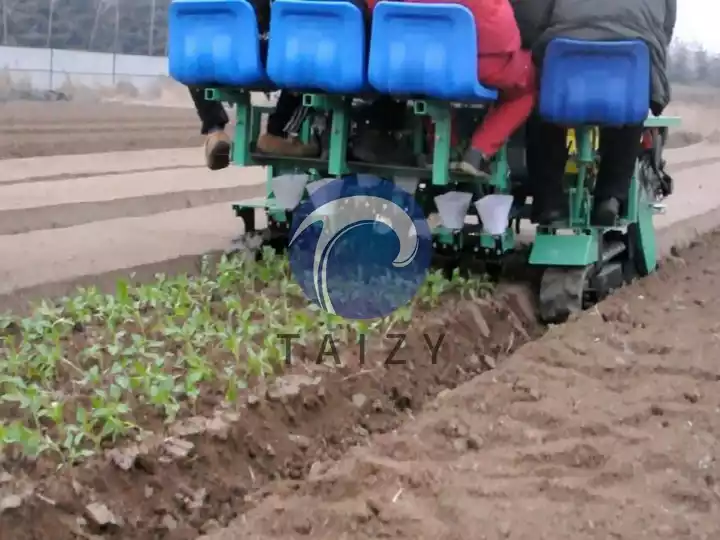How to Transplant Onion Seedlings?
With the advancement of agricultural mechanization, onion seedlings and multi-row crop transplanters have become essential tools for large-scale planting and managing multi-row crops. They not only enhance transplanting efficiency but also ensure uniform seedling spacing, providing farmers with a highly efficient and intelligent production experience.
Multi-row transplanting for diverse crops
The transplanting machine can plant 1-18 rows of seedlings in a single pass. Row counts are customizable to client needs, flexibly adapting to small farms or large-scale mechanized cultivation. Its compact structure and stable operation suit various terrains, including flatlands, hillsides, and greenhouse environments.
The machine supports a broad range of crops:
- Vegetable seedlings: onion, tomato, carrot, pepper, broccoli, lettuce, etc.
- Melon, fruit, and potted seedlings: melon, cucumber, eggplant, tomato, etc.
- Tuber and field crops: potato, taro, sweet potato, tobacco seedlings, etc.
Whether in open fields, greenhouses, or multi-row planting, the transplanter operates efficiently, ensuring uniform seedling alignment and consistent spacing to achieve standardized, large-scale cultivation.


Adjustable spacing saves labor
The onion seedlings transplanter supports free adjustment of row spacing and plant spacing. Engineers can customize the optimal spacing based on different seedlings and field conditions, ensuring healthy seedling growth and maximizing land resource utilization.
Only one operator is needed per row. When paired with a tractor, it enables continuous multi-row operation, significantly reducing labor costs and boosting productivity.
Additionally, the equipment utilizes wear-resistant materials and an optimized mechanical structure to ensure stable and efficient performance during prolonged use. Operational videos demonstrate the fully automated workflow: feeding—transplanting—neatly arranging—outputting seedlings in straight rows. This enhances production efficiency and seedling survival rates.
How to improve seedling survival rates?
Before transplanting, maintain moist seedbeds, apply fertilizer promptly, and remove weak, diseased, or overcrowded seedlings to ensure uniform growth of larger seedlings (20-25cm tall) post-transplant.
The onion seedlings transplanter’s continuous operation capability enables rapid transplanting, minimizing seedling damage and drought stress, thereby significantly boosting survival rates.
Combined with optimal row spacing and plant spacing settings, seedlings grow uniformly in the field, facilitating subsequent management, fertilization, and irrigation to achieve high-yield, high-quality agricultural production goals.
Conclusion
Our vegetable seedling transplanters provide farms and greenhouses with stable, high-yield solutions that require minimal labor input. Suitable for large-scale mechanized cultivation, they accommodate a diverse range of crops, terrains, and seedling specifications, making them ideal equipment for achieving efficient and standardized management in modern agriculture.
